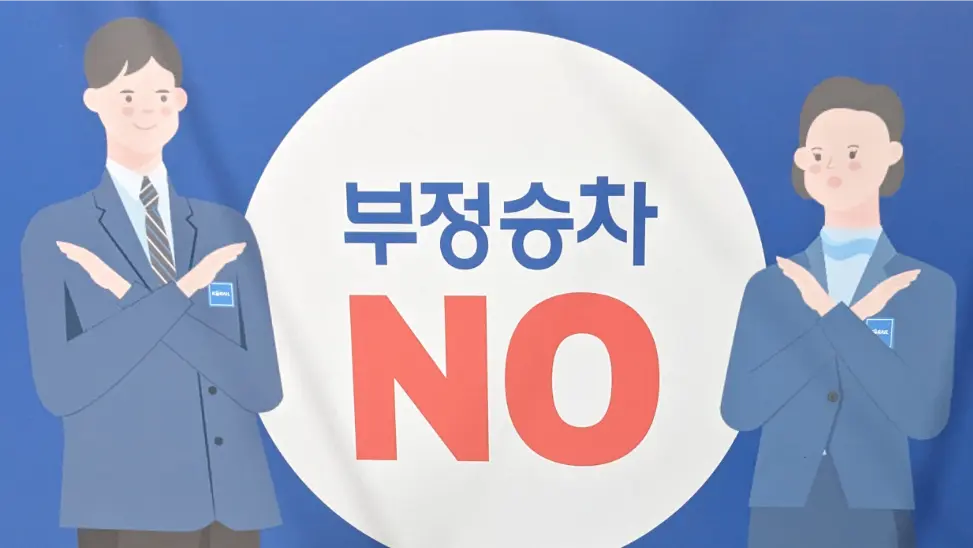Saw this comment from someone in Germany, 3000-4000 euros and very intensive process. https://feddit.de/comment/7204601
In the USA most places have no viable transportation alternative to cars. As a result drivers licenses are a critical factor in functional independence and fundamental human needs. Even though there are permitting and test requirements to get a license, there is no effective limit on how many times the written, or driving skills tests can be taken. There is also no chain of accountability between those administering the tests and the drivers they approve for licensing. This means that anyone can take the written test a few dozen times until they have seen the finite number of questions several times over and eventually pass. Likewise, taking the driving test many times will inevitably result in the person encountering a “forgiving” skills test proctor.
The Department of Motor Vehicles or DMV, like every government institution in the USA has been subject to a continuous political assault by the Republican party of the oligarchs. The workers are understaffed, underpaid, and it is a notoriously miserable place to work. The results of such an inadequate and negligent political structure produces predictable results.
We also lack any effective mechanism to take the elderly off the road, and because losing a license ends their independence, we have a large number of elderly pushed to drive when they do not qualify.
DMV, like every government institution in the USA has been subject to a continuous political assault by the Republican party of the oligarchs
For any non-Americans coming along, the DMV varies wildly by state, it’s not a federal entity. Who one deals with for a driver’s license where I’ve gotten one: DMV in Oklahoma, Secretary of State in Illinois and local tax office in Florida.
First 2 were a misery, bring a book and take a number, wait 2+ hours. Local office in Florida? I’m annoyed if I have to wait at all. Walk in, say what you want, get directed to a desk. Last time I renewed, 10-minuted from parking lot to driving away.
I can only say what it was like in Tennessee, Georgia, and California. All were wait in long lines at a DMV type, but all were near cities; Chattanooga/Atlanta/Los Angeles. I also did my Commercial Class-A license in California and that is a whole different experience too. Occasionally I’ve gotten lucky and gotten in and out within an hour, but there have been many times it was 2-3 hours. I’ve also had times when I had to jump through some hoop to bring some extra document, come back and get told there is some other holdup and it just keeps on looping. It can be such a mess with things like commercial licenses where there are more interstate and federal layers like hazardous materials certifications, medical certs, etc, but it has always been a dreaded activity for me.
Florida freaked me out. When I got here I assumed I couldn’t afford tags. Finally got a ticket, went into the tax office, empty. 5 people, “Sir! I can’t help you over here!” $35. Now $79 I think?
My wife’s not even American. She waited 20-minutes, took another 10, rolled out with a new license with her new surname.
It’s so mad efficient, I always vote for the incumbent tax person. LOL, only post I’ll vote R!
during covid, the state here didn’t even require a driving skills test to get your license.
Swede here, I got mine back in 2022, total cost was about 60000 SEK.
I am 36 now, so I started late, and it took about a year of spread out lessons to get it.
-
The first risk course, this takes several hours, and goes through the dangers of driving, as long as you take part you will pass.
-
Theory, takes about a week or so of evening classes, then you study on your own, you have to pass the theory test with in half a year before you can take the practical test
-
Practical lessons throughout.
-
The second risk course, also called the skidpan, this is fun, it is the first time you get to drive a car without an instructor beside you, just on a track, but still, you get to experience driving on a slippery surface and trying different manouvers, to see how the car reacts. You need to accellerate hard and then slam on the breaks at a specific point on dry and wet surface, then you need to try a swerving manouver as if a moose is about to cross the path of the car, there are also a few more steps to this, this is often considered the highlight of learning to drive.
-
Theory test, you go into a testing room, are asked many questions, and given a score, the questions tend to be focused on scenarios on what you would do here, or if X/Y is right in this case or not.
-
Practical test, you can’t take the practical test unless you have passed both risk courses and the theory test, they all have to be passed recently enough for them to be valid at the time of the practical test. If they are not valid, you won’t get to do the test. The testing officer comes out and meets you, and explains the test, what they will be looking at and how you will be judged, what an instant fail will look like, and what they expect of you. The test is very relaxed, you drive around for a bit, through some crossings, roundabouts and motorways, you get to perform a few manouvers like parking, reveresing around a corner, turning around and stuff like that. At the end of the test the testing officer will give you feedback on the test and how well you did and what you should think about in the future, if you passed you will immediately get a note in the government systems that confirm that you have a license to drive cars so you can manage with just your national ID untill you get your proper license in the mail.
Second risk course sounds so helpful and fun! Wish that was common practice in other national driving programs.
I did ask this about a year or so ago on AskEurope on Reddit, and several european countries had something similar according to the comments
Jfc, I thought the 18k sek my friend paid was a lot… Though he’d been driving for 20 years already
Well I am being unfair, I only drove with a driving school, and never took lessons with my family, I live alone and dad didnt have a suitable car for learning in.
It’s insanely expensive if you don’t have family with a car. Pretty unfair tbh.
-
Well, first you buy a box of cereal…
In the UK I had to do around 20 lessons, you got to take your test only when your instructor decided you were ready. And you had to have passed a theory test within the last three months I believe. The test was an hour of various maneuvers and questions. I passed on my second attempt. This was twenty years ago.
Then I moved to the US and it was a 5 minute drive around a car park while the test lady complained about her menopausal symptoms, and then “I can tell you can drive” and I passed.
It’s state-by-state in the U.S. When I was a kid, it was way, way too easy in Louisiana. You had to be 14 and pass the tests. (It was a relic of the olden days when farming families needed their kids to drive things to market. Reforms kept being blocked by rural interests.)
That was reformed when I was a teen but phased in. So, I just had to be 15, take driver’s ed (which was offered at public high schools), and pass a written and basic driving test. I drove a stick shift during my test and the tester was like, “You pass.” So, I didn’t have to parallel park or anything but I think some people did.
My younger sister had to be 15 (I think) to get a learner’s permit and wasn’t allowed to drive at night or without an adult for a period. So, it’s phased in now. I think 17 is when you can get a real driver’s license now and the driving test is more rigorous that mine was.
I renewed my license recently and I just had to take a vision test and prove my address (with a utility bill) and that I’m insured. There’s no upper age limit.
Recently got mine on December last year. Living in the Philippines by the way. Spent around 200 USD (including driving courses).
-
A theoretical driving course is now required by our government. This is a 2-day (15 hours) course where you are in a classroom setting and the fundamentals of driving are taught (road etiquette, signs, how to drive, etc). There is also an exam at the end which you are required to pass before you are given a certificate of completion.
-
The certificate received after completing the theoretical course will be used to obtain a student permit. This permit allows you to drive a car provided that someone with atleast a non-professional driving license accompanies you. Also, you will need to wait atleast a month before you can apply for a non-professional license.
-
With the student permit, you can enroll for a practical driving course. Our government again requires atleast 8-hours of practical driving lessons from a training center that is accredited by them. This is another course wherein you are taught how to actually drive a car.
-
After receiving the certificate for completing the practical course, and provided that 1 month has passed since you have been given a student permit, you may now apply for a non-professional license. Applying for this license involves a theoretical exam (60-item multiple choice questionnaire) and a practical exam, wherein an instructor will test your driving skills. If you’ve passed all of those, you just need to pay for the licensing fee and wait for you license to be released on the same day. Acquiring a non-professional license allows you to drive by yourself. Although if you want to drive a car for commercial use (such as trucks, buses, etc.), you will need to apply for a professional license.
-
-
Mandatory driving school as early as 14 years and 9 months of age (this is offered in most public high schools as an elective with credit(s), at local municipality sites, as well as through private sanctioned programs).
-
After completion of driving school, one must log hours driven with a chaperone (who holds an active driver license) – the log differentiates between highway and surface road mileage and one must complete a given number of hours for each.
-
As early as 16 and after completing both the above, one may sit for a written driver’s exam and then a practical driver’s exam. If both are passed, the individual is issued a limited driver license.
-
Until the age of 18, there is a curfew on what times the limited license allows for driving by oneself. At 18, those restrictions are lifted.
Which country/state/province/territory?
US/MI
-
US is pretty much a cake walk by many western standards. Take some classes, get a “learners permit”, drive with an instructor for a while, drive with an adult for a while, take a written and easy practical driving test, and you’re done for life.
I’ve got to qualify that it varies a little by the state it’s done in, some states are easier than others.
I’ve driven in a couple other countries and, while everyone has their idiots, the US has an over abundance of them thanks to the ubiquity of cars and what amounts to pretty lax enforcement of any sort of rules or car safety requirements. IOW, pretty much every idiot drives, they often drive unsafe cars that are either maintained poorly or modified in unsafe ways.
It’s funny people talking about how things are done in the U.S. and giving different answers.
It would sort of be like saying how it works in the E.U., then describing how the process works in France.
In Pennsylvania, you have to be 16 years old. Initial permit and 4 year license costs $45.50
You need a physical and a form filled out by the doctor.
You need an adult to fill out a form, then you study the drivers manual. When you’re ready you go to the DMV, get a vision test, and take a knowledge test. If you pass, you’re issued a permit that allows you to drive with an adult driver supervising you.
You have to wait six months before you take the road test. You’re supposed to drive for 65 hours driving at different times, in different weather, different traffic, different roads, etc. However, it’s on the honor system. When you take the driving test, the driver who had been supervising you fills out a form stating that you’ve completed the 65 hours. I suspect the vast majority of parents just lie.
When you’re ready for the road test, you discover that now the true challenge begins: scheduling the test. They tell you to schedule your road test for six months after you get the permit, but I can’t imagine anyone would be able to get 65 hours of driving done in 6 months. So, if you can’t manage that, you have to schedule the appointment when you can, and that is another miserable task. The DMV open appointments at 4am, and they’re all taken by 4:01am.
We managed to get our oldest tested at e DMV. He failed during the parallel parking because he didn’t realize he could back out and try again. The examiner told him after he failed that he could have tried up to three times. When he retested, he passed.
When we were going through this with our next child, we paid a driving school to administer the test. The price included a 1 hour refresher course in one of their cars, then another instructor took him out for the test.
In my case, I did do the 65 hours driving with two of my kids, and it was brutal. It’s tough finding that much time. For my last child, the pandemic hit as she was at about 20 hours. I had to work longer hours, and it was tougher finding time to drive with her. We ended up renewing her permit, then eventually had to re-take the knowledge test and start over.
By this time, she was over 18, and I wanted her to have her license so she could drive at college. I took her to a driving school. I described the situation, and they recommended they take her out to see how she does. After the evaluation, they gave her a list of things to practice, and we spent a few more weeks driving, then she went to the school to take a road test and passed. I never got to 65 hours with her, but by the time she got her license she no longer had to do the 65 hours because she was over 18.
If you’re under 18, you get a junior license. You’re not allowed to drive between 11pm and 5am, and you aren’t allowed to have more than one passenger who is under 18 unless they are family. After six months, you’re allowed to have up to three non-family passengers under 18.
When you turn 18, the junior license becomes an unrestricted license.
Edit: forgot to mention: my dad (age 85) told me that when he got his license, he took the knowledge test, passed, immediately took the road test, passed, and got his license the same day. That would have been 1954. Of course, he had been stealing his dad’s car for joy rides since he was 13, so he had some experience driving.
It’s funny people talking about how things are done in the U.S. and giving different answers.
Yeah, different states have different requirements and processes.
In Kansas, when I got my original license in the 90s it cost like $60 total to get the first one and ever since it has been somewhere between 10-30 or so to renew every 6ish years or something. Originally you had to take a written test that you could fill in at home. Just ridiculously cheap and no real barriers. We also don’t have any kind of emissions requirements for non-commercial vehicles. The lax requirements for driving and emissions is probably the result of the farming lobby.
3-4000€ what did that person do??
I paid like 2000€ because i needed to take a few more hours. perfect parking in the exam though :)It’s usually mor eebexpensive in smaller communties. I paid 3000€+ about 10 years ago and was surprised that people in cities sometimes got them for 1500-2000€
Since there are so many different components it can vary wildly. My in-car lessons are 85 EUR for 80 minutes. A friend of mine goes to a fahrschule where it’s 120 EUR for the same amount of time.
Then there is paying every time you need to redo the test, and every extra in car lesson you need.
When was this?
5 years ago… so probably not a very fair comparison, condiering all other prices went up too…
United States: $60 written/oral test for Learner’s Permit available at age 14. Allows for young drivers to be on the road during the daytime with their legal guardian. 80 hours of road time, one year of Learner’s Permit, and age 16 (some exceptions) required before drivers can apply for full license. Some local governments restrict driving privileges for minors, regardless of license status, through things like curfews or maximum speed laws.
Where I live in the US most people get a learners permit when they’re teenagers, then when they’re ready they take a written and driving test at the DMV to get their regular license. I got mine when I was 16. Is that not how it’s done elsewhere?
So you can be fully licensed at 16 in the states? In my province in Canada you start the process at 16 but written test and two practical tests later the earliest you can get a full license is 18.
That was the process when I was a teenager in the 90s and I’ve never heard that it’s changed since! I had my full license when I was 16, but I don’t think your were supposed to have more than a certain number of people in the car it drive out of state until 18. We all did that stuff anyway though and no one seemed to care lol
Yep, my kid is part way through the graduated license and it feels like a long, long process. I think there’s value in it as there are restrictions on the number of people under a certain age until you get the full license. Which I agree with.
Go to drivers ed, go online and take a test, get your hours in, take a driving test, done.
In my province in Canada it’s a written test, 1 year driving experience supervised, a practical test, then you can drive with just one friend in the car for another year, and then you take another practical test and have your full license.
Curious about how it goes in your area of the world.
When someone turns 16, they can get a permit, which means they can drive with parental permission, and after a year, they can get a driving test done in front of a tutor. The tutor grades skill as well as potential red flags, and you get your license after a few weeks of passing grades. And then you have joined the driving community.
However, in the very rural areas here, I’ve seen field workers let their very young teens drive, like some aren’t even in high school yet. Definitely not legal, but it’s normal and hasn’t led to any issues yet.
Netherlands right?
You can drive at any age as long as you’re not on the public roads, technically.
Here it’s more like a forgotten law than a freedom. It’s typically the farming families sending their kids (or more frequently their nieces/nephews/wards, most people here didn’t give birth to their own kids) on the trucks to carry supplies. Police are probably aware but it comes up very infrequently, it’s one of those “redneck toughguy maturity stereotype” things for a lack of a better way to explain. I assume public roads are involved, but that status for roads is very relative here unless you’re talking about city highways. All this I learned as classmates of my school system who weren’t too urban would brag all the time that “I’m years ahead of you” and stuff when people took their driver’s tests.








